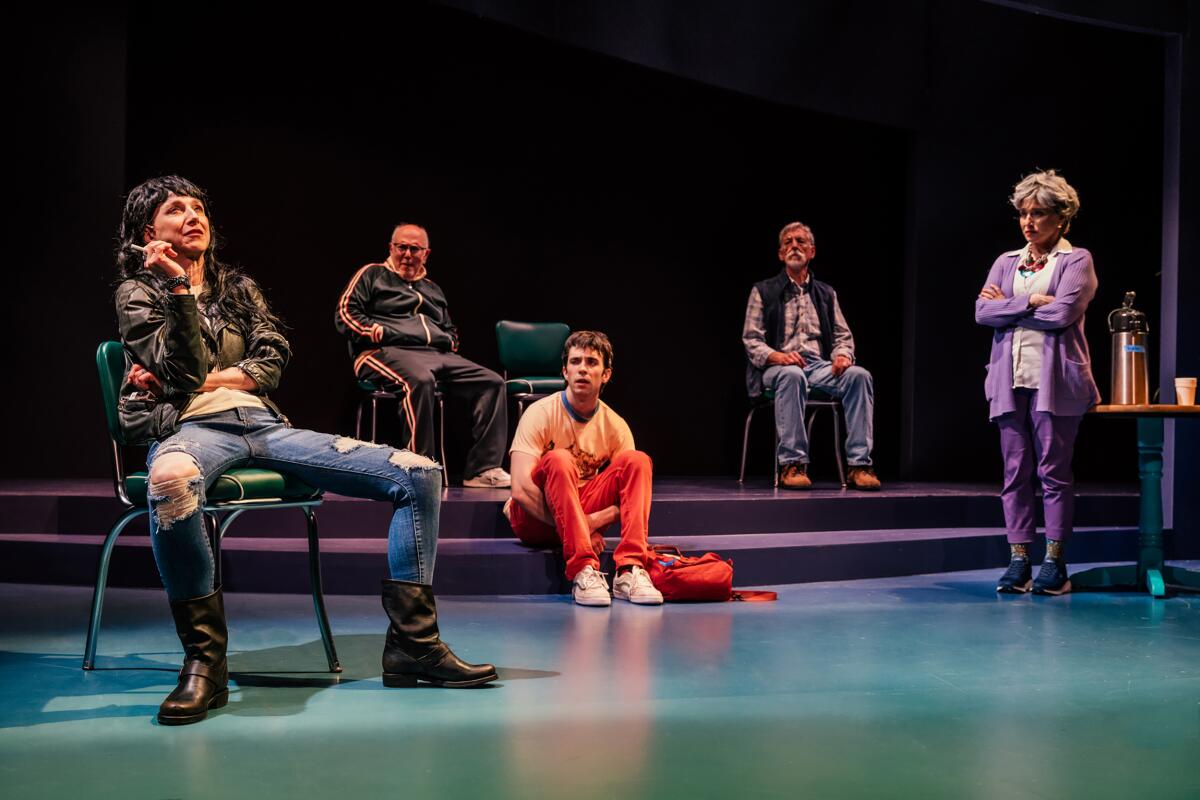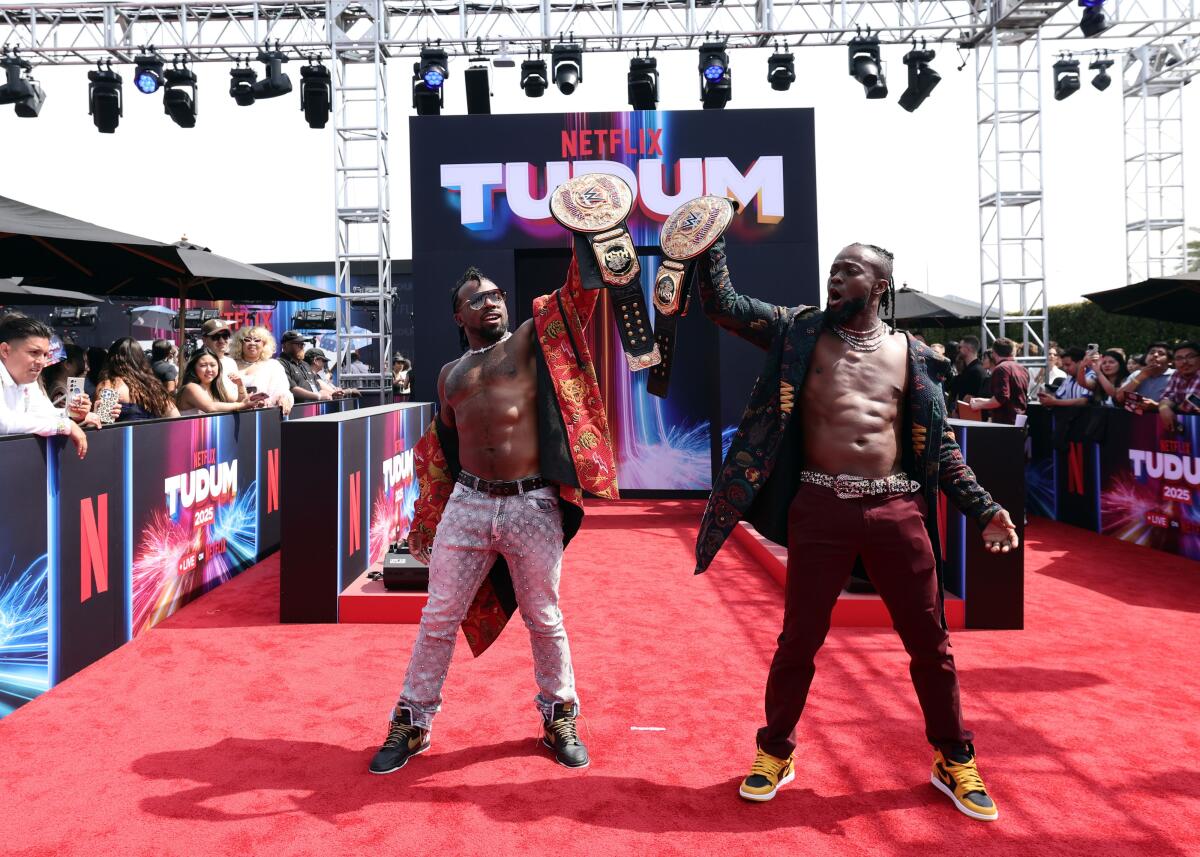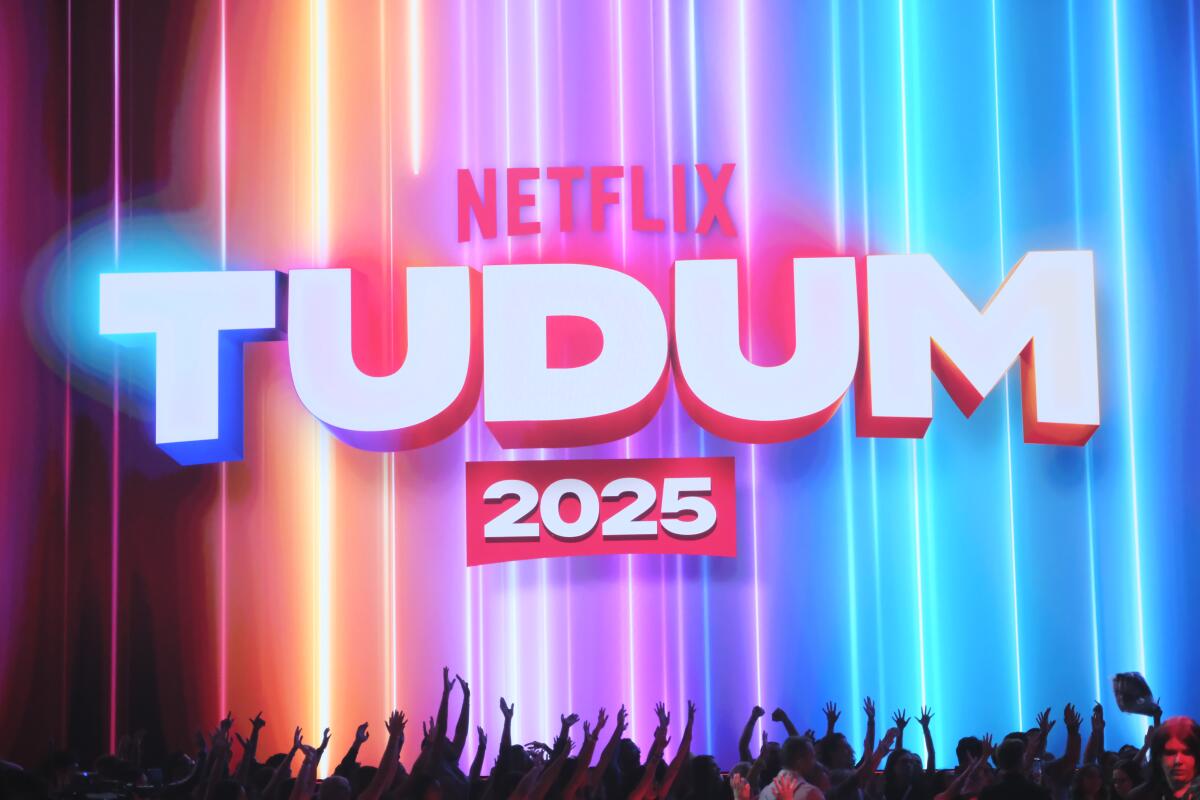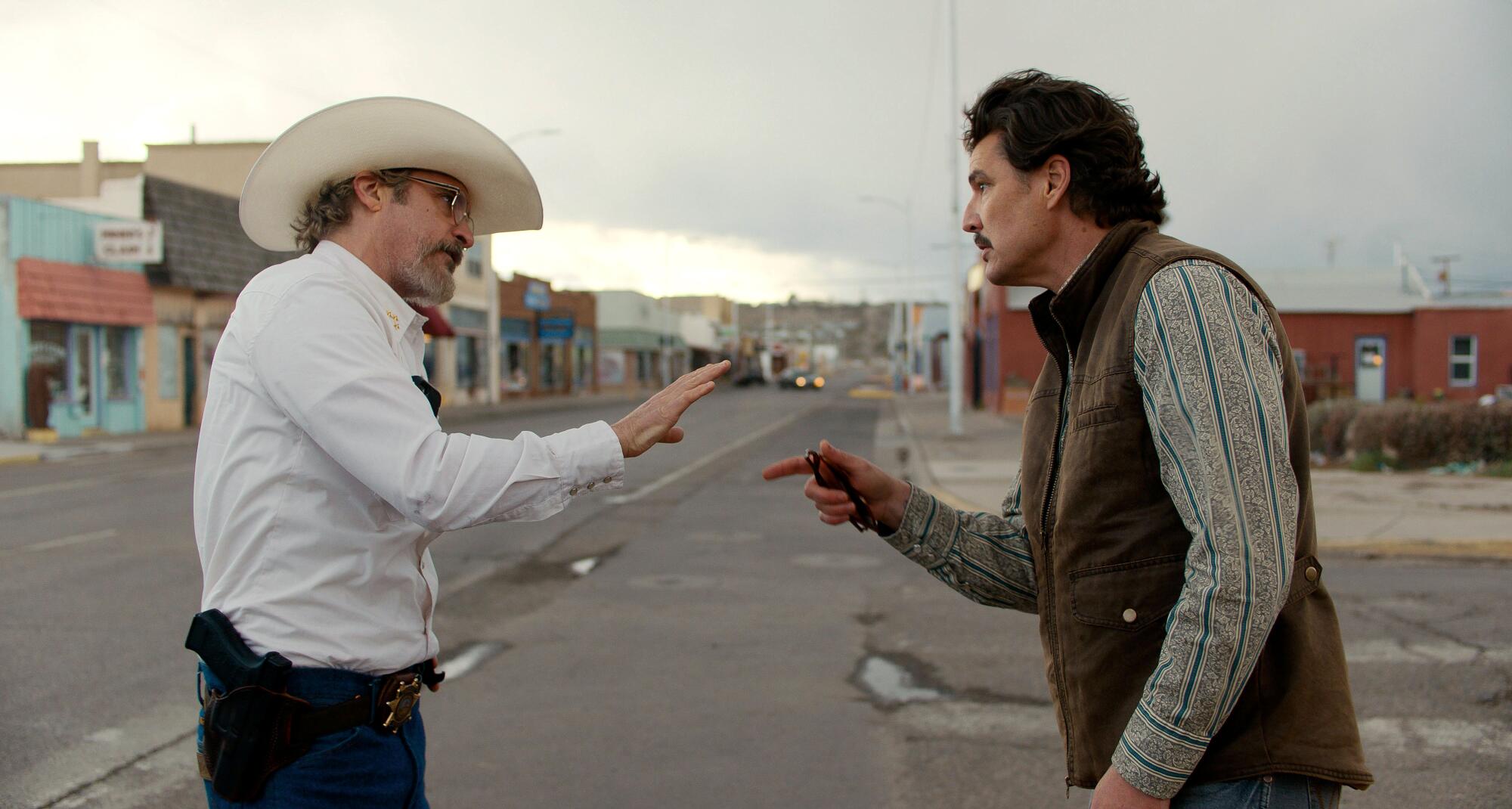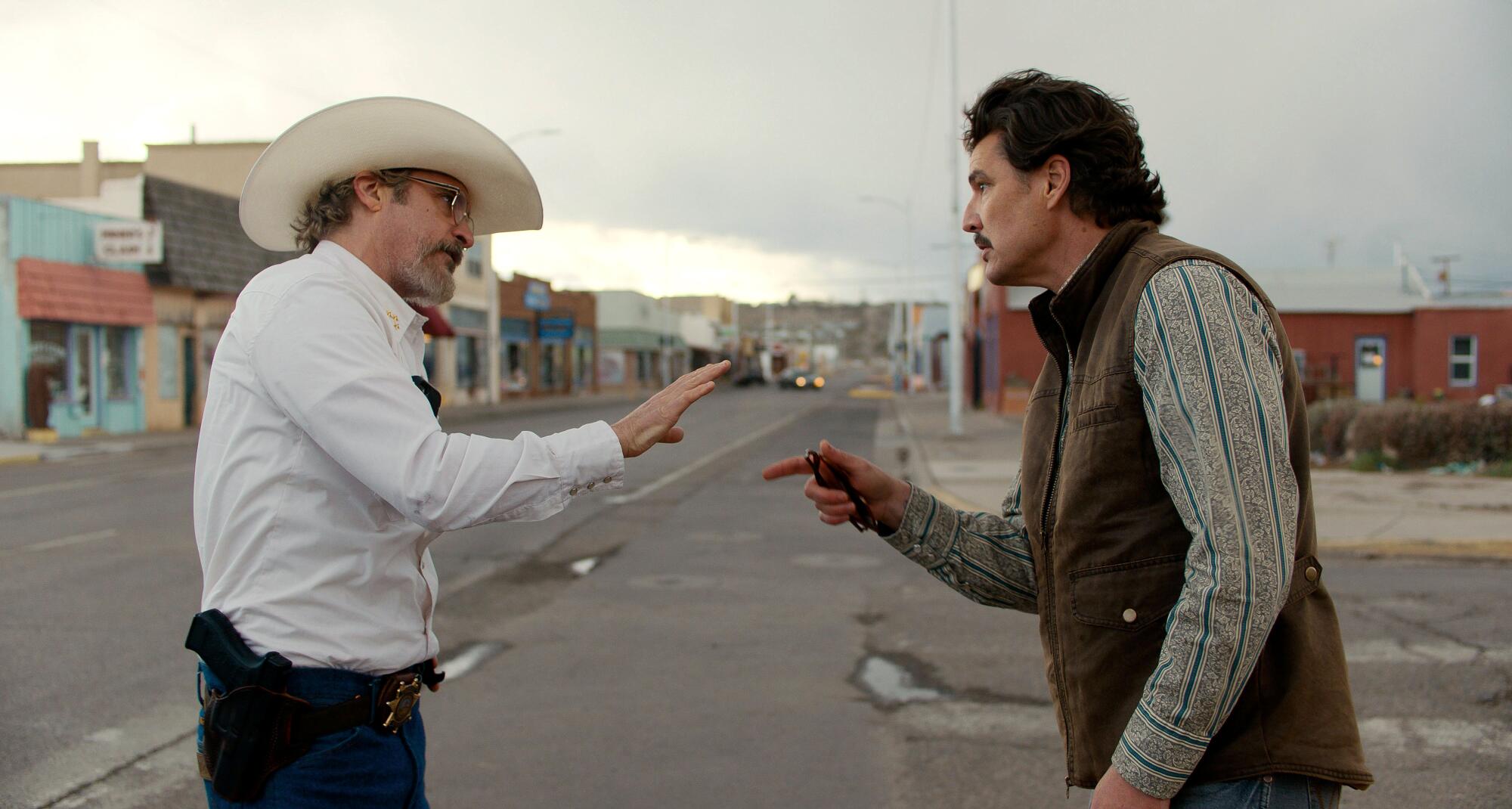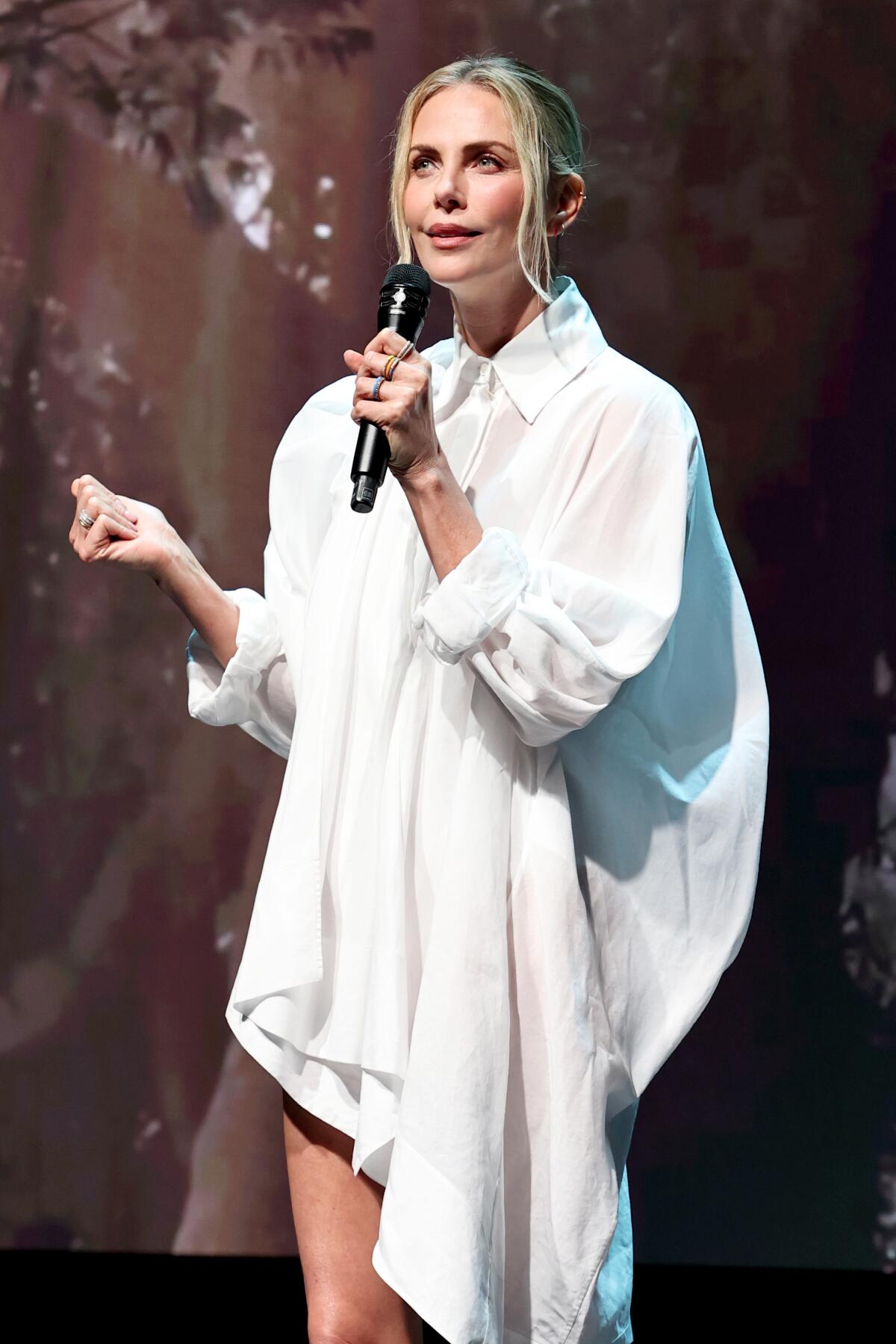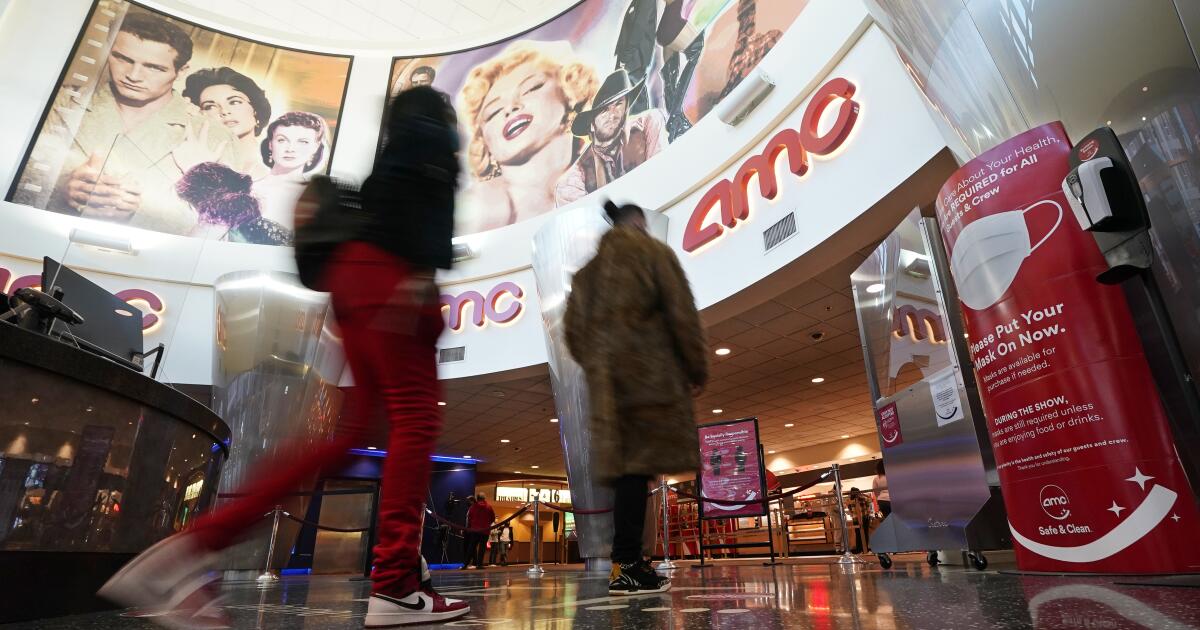Easy laughs gloss over flaws of Jake Brasch’s ‘Reservoir’ at Geffen
All unhappy families of addicts are unhappy in their own way. Unless, of course, you’re a stage family, overrun with “characters” who don’t so much speak as deliver laugh lines and dispense nuggets of moral wisdom. Those families tend to be all alike, regardless of the superficial differences among them.
Grandparents play a larger role than usual in Jake Brasch’s “The Reservoir,” which opened Thursday at the Geffen Playhouse under the direction of Shelley Butler. But the theater’s ability to turn family dysfunction, be it alcoholism, Alzheimer’s or just garden-variety existential agony, into entertainment and instant illumination, has long been a staple of the American stage.
My tolerance for the artificiality of the genre may be lower than most theatergoers. Some take comfort in hoary comic patterns, souped-up eccentricity and reassuring pieties. Overexposed to this species of drama, I slump in my seat.
Indeed, my patience was as thin for “The Reservoir” as it was for “Cult of Love,” Leslye Headland’s drama about a family breakdown during the holidays that made it to Broadway last season after its 2018 premiere at L.A.’s IAMA Theatre. Neither play is beyond pandering to its audience for an easy laugh.
Serving as protagonist and narrator, Josh (Jake Horowitz), the queer Jewish theater student on medical leave from NYU who wakes up one morning after an alcoholic bender at a reservoir in his hometown of Denver, exhibits the snappy, manic banter of a drunk not able to face up to his problem. Patricia (Marin Hinkle), his long-suffering mother, has had it with Josh’s relapses, but how can she turn away her son who lies bleeding on her couch?
With his mother’s help, Josh gets a job as a clerk at a bookstore as he tries once again to pull his life together. Fortunately, Hugo (Adrián González), his manager, is quick to overlook his lax performance. Apparently, drinking has so scrambled Josh’s brain that alphabetizing books takes every ounce of his strength.
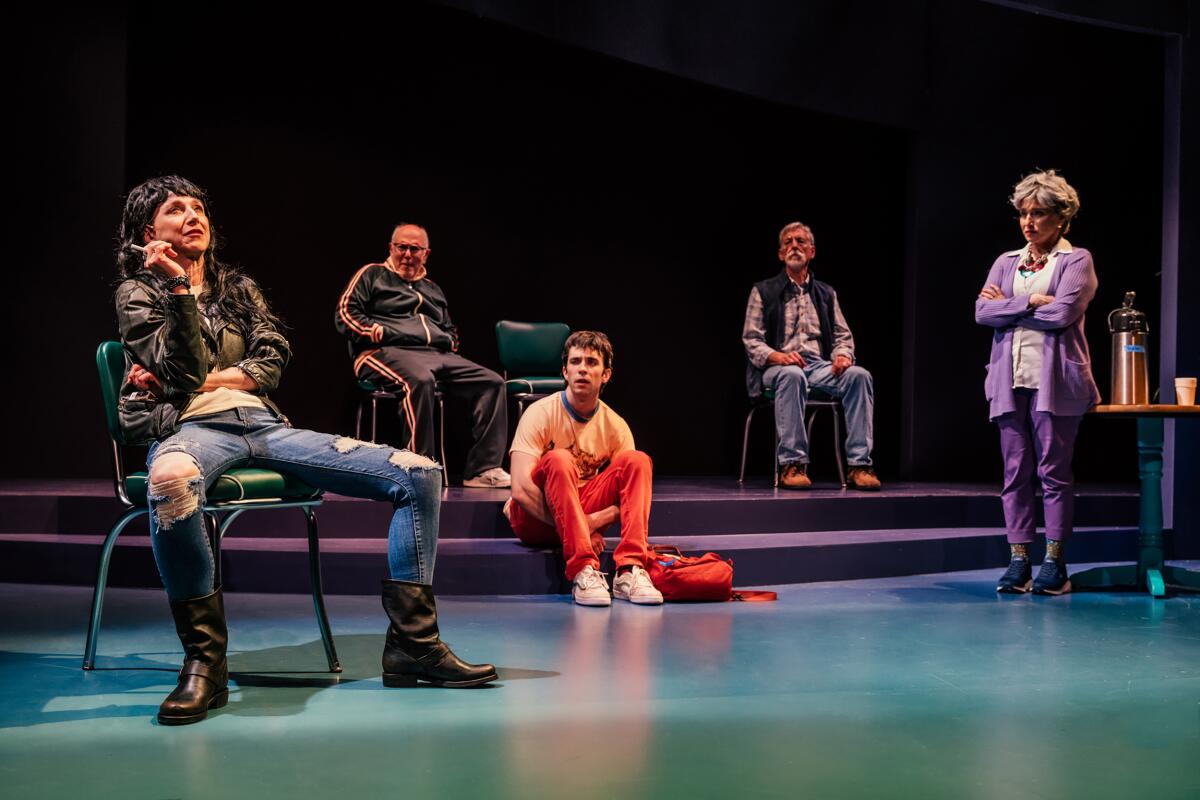
Marin Hinkle, left, Lee Wilkof, Jake Horowitz, Geoffrey Wade and Liz Larsen in “The Reservoir.”
(Jeff Lorch)
I didn’t quite feel as indulgent toward Josh, but not because I didn’t sympathize with his struggles. My beef was that he sounded like an anxious playwright determined to string an audience along without forced exuberance and sitcom-level repartee. (Compare, say, one of Josh’s rants with those of a character in a Terrence McNally, Richard Greenberg or Jon Robin Baitz comedy, and the drop off in verbal acuity and original wit will become crystal clear.)
What gives “The Reservoir” a claim to uniqueness is the way Josh’s four grandparents are conscripted not just into the story but into the staging. Seated in a row onstage, they serve as chorus to their grandson’s travails, chiming in with their own opinions and acting out his description of the way his thoughts compulsively take over his mind, like an unstoppable train or a raging river.
Each also has an individual role to play in Josh’s recovery. Patricia’s mother, Irene (Carolyn Mignini), for example, has been transformed by dementia since Josh has seen her last. She’s always been his favorite grandparent. He fondly recalls baking cookies, playing Uno and singing along to “The Sound of Music” with her. Even when she pulled away after he came out in high school, his affection has remained steadfast.
He would like to connect with her again and fears he has lost his chance. At the bookstore, he reads up on Alzheimer’s disease and hatches a plan to build up the cognitive reserve of all his grandparents by feeding them spinach and keeping them mentally engaged. He’s trying, in effect, to save himself by saving them, but they’re too feisty to be corralled by their unstable grandson.
Irene’s fiercely protective husband, Hank (Geoffrey Wade), an arch religious conservative, is too grumpy. As for Josh’s paternal Jewish grandparents, Shrimpy (Lee Wilkof) is too much of a practical joker with sex on his mind. And Beverly (Liz Larsen), an electrical engineer who doesn’t mince words, is too gimlet-eyed not to see that Josh is focusing on his grandparents to avoid doing the hard work of recovery.
Having been sober for many decades herself, Bev recognizes the narcissism of addiction, the way addicts have a tendency to put themselves at the center of the universe. She offers Josh the tough love that he needs, forcing him to see that a grandparent isn’t just a grandparent but a human being with a complicated history that needn’t be worn like a Kleenex visible from under a sleeve.
Josh sets out to be a savior but ends up getting an education in the reality of other people. Brasch’s intentions are noble, but “The Reservoir” doesn’t plunge all that deep. The play draws out the distinctiveness of the grandparents by ratcheting up their zingy eccentricities. How easily these characters fall into a punch-line rhythm. Larsen has the most consequential role and she imparts just the right note of astringency. But the staginess of the writing makes it difficult for any of the actors to transcend the shtick that’s been assigned to them.
Hinkle brings a depth of realism to her portrayal of Patricia, but the character isn’t fully developed. Whole dimensions of Patricia’s life are veiled to us. Both Hinkle and Gonazález gamely play other characters, but these sketched presences compound the general impression of a comic world drawn without much nuance.
The staging is frolicsome but visually monotonous — a problem for a play that is much longer than it needs to be. More than two hours of looking at the fey-preppy outfit costume designer Sara Ryung Clement prepared for Horowitz’s Josh becomes a kind of fashion purgatory for audience and protagonist alike.
I’m not sure why a production that doesn’t take a literal approach to settings has to repeatedly trot out the front seat of a car. The spry assistance of stagehands, who not only move set pieces but help flesh out the world of the play, is a jaunty touch. But the sound and lighting effects get rather heavy-handed during Josh’s hallucinatory meltdowns. Blame for the inexcusably clunky dream scenes, a writing fail, can’t be pinned on the designers.
Horowitz had the Geffen Playhouse’s opening-night audience in the palm of his hand, but I heard an actor playing his comic lines more than his character. Horowitz, however, is only following the direction of a playwright, who has a harrowing story to tell and needs you to enjoy every tricked-up minute of the zany-schmaltzy telling.
‘The Reservoir’
Where: Gil Cates Theater at Geffen Playhouse, 10886 Le Conte Ave., Westwood
When: 8 p.m. Wednesdays-Fridays, 3 and 8 p.m. Saturdays, 2 and 7 p.m. Sundays. Ends July 20
Tickets: $45 – $139 (subject to change)
Contact: (310) 208-2028 or www.geffenplayhouse.org
Running time: 2 hours, 15 minutes (one intermission)
